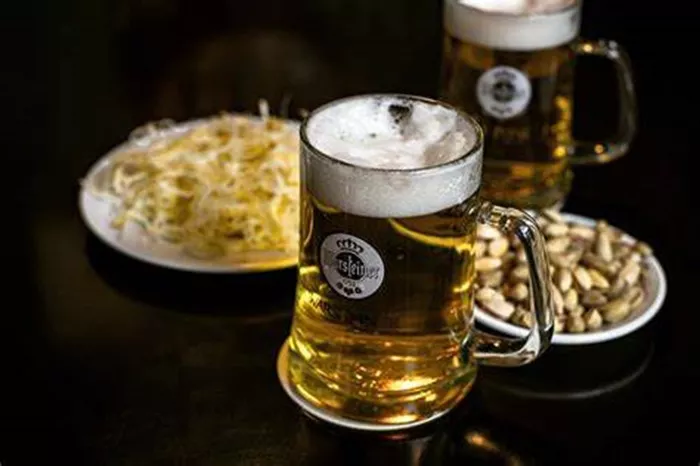Non-alcoholic beer is experiencing a surge in popularity in some global markets while struggling to gain traction in others, with consumption patterns driven by a complex mix of health consciousness, cultural norms, regulatory factors, and affordability.
In 2023, Germany led the global market for 0% beer, consuming 10.4 million hectolitres, according to GlobalData, parent company of Just Drinks. This figure, while still dwarfed by the 73 million hectolitres of alcoholic beer consumed in the same period, reflects a significant market share. Non-alcoholic beer accounted for 14.2% of all beer (alcoholic and non-alcoholic combined) consumed in Germany that year.
The Czech Republic, which leads the world in per-capita beer consumption, also posted robust figures for 0% beer, with 1.3 million hectolitres consumed—over 8% of the country’s total beer intake. Spain and Japan follow closely behind, consuming 2.9 million and 3.1 million hectolitres respectively, representing 6.7% and 6.2% of their total beer markets.
However, the category’s success is far from universal. China, the world’s largest beer market by volume, consumed more than five times the amount of alcoholic beer as Germany in 2023, but only 250,000 hectolitres of non-alcoholic beer—40 times less than Germany. This amounts to just 0.1% of China’s total beer consumption.
The inconsistency suggests that high beer consumption alone does not ensure a receptive market for 0% alternatives. In countries with deeply entrenched alcohol culture, the appeal of non-alcoholic beer can be minimal. According to Kevin Baker, director of research on alcoholic beverages at GlobalData, alcohol remains a “core component of the beer proposition” in many regions.
Cultural acceptance has been critical to Germany’s success. Nina Göllinger of the German Brewers Federation attributes the rise of non-alcoholic beer to growing health awareness and lifestyle shifts. “Over the last twenty years, non-alcoholic beers and mixed beer drinks have become lifestyle products,” she said, noting their popularity among athletes due to their isotonic properties. A 2021 survey by the DBB indicated that nearly half of Germans drink non-alcoholic beer.
Elsewhere in Europe, non-alcoholic beer has also gained ground in Poland, France, and Spain. Heineken’s Amstel 0.0% has seen success in Spain, where, according to the company’s global innovation director Jules Macken, beer is already considered a low-alcohol alternative in a wine- and spirits-dominated market.
Japan stands out in Asia as a significant market for non-alcoholic beer, driven largely by regulatory changes and demographic shifts. A 2007 amendment to Japan’s Road Traffic Act, which increased penalties for drink driving, spurred demand for alcohol-free options. Asahi Group Holdings noted that these products have also facilitated participation in Japan’s workplace drinking culture, allowing employees to maintain social rituals without consuming alcohol. Additionally, Japan’s aging population is contributing to a broader shift toward alcohol-free alternatives.
In contrast, other large beer-drinking Asian countries such as China and Vietnam have yet to embrace 0% beer, despite their significant consumption of alcoholic beer. According to Asahi, factors including the affordability and availability of taxis in China have reduced the necessity of alcohol-free options.
Economic considerations are another key determinant. In lower-income markets or those with high wealth inequality, such as India, Mexico, and Russia, the higher cost of 0% beer compared to soft drinks can deter consumers. Laurence Whyatt, beverages equity researcher at Barclays, notes that consumers must be relatively affluent to opt for 0% beer, which typically costs twice as much as a soft drink.
“In India, beer is often viewed as a luxury product,” Whyatt explains, “and the demand tends toward high-strength varieties, making non-alcoholic versions a harder sell.”
Heineken’s Macken echoes this view, pointing out that in countries where average income is low relative to the cost of 0% beer, consumers are less likely to spend the equivalent hours of work required to purchase it.
While price and culture are significant, regulation has also played a pivotal role in market development. In Japan, enforcement of drink-driving laws was a turning point for non-alcoholic beer, while in regions with lax enforcement or cheaper transport alternatives, demand has remained low.
Broadly, the growth of the non-alcoholic beer sector appears to hinge on three major factors: health awareness, regulatory environment, and economic feasibility. In some nations, strong police enforcement and health-conscious lifestyles drive adoption, while in others, cost barriers and cultural resistance continue to suppress growth.
Despite its uneven global presence, non-alcoholic beer is carving out a niche, especially in health-driven and regulation-influenced markets. As consumer preferences shift and markets evolve, the category may yet find broader appeal—though not without overcoming deep-rooted habits and economic limitations.
You Might Be Interested In:


